Communication Aboard USS Constitution
Students view and discuss four objects that were used for communicating on USS Constitution.
Students view and discuss four objects that were used for communicating on USS Constitution.
Make an 1812 officer’s hat out of paper and view an original hat that belonged to a USS Constitution midshipmen.
A ship’s bell played a crucial role for timekeeping on board a ship and was rung every half hour to mark the passage of time in each four-hour watch (shift). Students view two actual bells associated with the USS Constitution.
Compare a ration for a United States Navy sailor during the War of 1812 to a modern combat ration. Compare the number of calories required to sustain their health.
A sample list of early 19th century rules from the United States Navy.
Make hot chocolate as a sailor would have made it in the early 1800s, using a primary source recipe.
Use this crossword puzzle to learn vocabulary related to naval medicine in the 19th century.
Students view and discuss a primary source logbook showing the crew’s positions up in the sails.
USS Constitution‘s cook had to do a lot of math to feed 480 hungry men. Students use multiplication, conversions and fractions to scale the serving sizes found in recipes for Ship’s Biscuit, Sailors Duff, and Hot Chocolate.
Each gun on Constitution was manned by the same gun team in practice and in battle. These teams developed their own identity and named their gun to unify them. In this activity, students view an 1812 object that belonged to a gun team and discuss their own experience bonding over
View and discuss the uniforms of an 1812 U.S. Marine and U.S. Navy sailor.
Read regulations from 1802 to learn about the role of a U.S. Navy captain.
Midshipmen were the officers in training on USS Constitution, often teenagers. Take this quiz to see if your students would qualify to be a midshipman in the U.S. Navy during the War of 1812.
Students view an original speaking trumpet and make one out of paper.
Students guess the ingredients in two strange-sounding sailor dishes: lobscouse and dunderfunk.
How many sailors could sleep on the berth deck at the same time? To answer this question, students will view a primary source and calculate the area of the berth deck and the average size of a sailor and a hammock.
Read these primary and secondary source quotes about the sailor chore of holystoning: cleaning the floors of the Ship.
This game is a maritime version of ‘Simon Says.’ See if your students can keep up with the commands of the Ship’s captain.
Two primary source quotes about discipline and flogging on board a U.S. Navy ship. Flogging was a severe form of corporal punishment reserved for the most serious offenses.
In this simple game, students guess which foods have vitamin C and compare & contrast these foods with a sailor’s diet in 1812.
Compare and contrast student’s daily routines to those of sailors in 1812.
Students learn about a sailor’s daily routine and compare and contrast it with their own schedules.
John Lord’s engraved powder horn was designed to carry gunpowder, but was also a special memento of his service. In this activity, students engrave a bar of soap inspired by this primary source object.
Sailors often believed in superstitions, which were circumstances that brought them good luck or bad luck at sea. Use this list to learn some of them and have students brainstorm or research additional superstitions.
Inspired by John Lord’s creative seabag from 1824, students decorate a drawing of a sea bag.
Many words and phrases in our daily language have maritime roots. Students will identify what the phrases mean today and form theories on their evolution.
Use these statistics to see how students compare to a U.S. Navy sailor and Marine on USS Constitution in 1812. This activity includes statistics, gleaned from primary resources, about the people who served on the ship.
Join Constitution‘s crew in 1812 with this paper-based recruiting quiz. Pair students up and have one be the recruiter while the other is the sailor being recruited. Ask your students: what qualifications do you think were needed to join the United States Navy in the War of 1812?
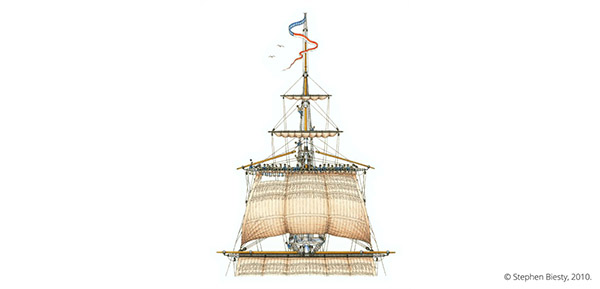
The “engines” that drove Constitution forward were her sails: massive canvas sheets, some as big as a basketball court. Controlling them was the job of the topmen. Their work demanded strength, skill, and a head for heights. They climbed the rigging in all weathers, often in darkness, and as high

Stepping onto the deck of Constitution was like walking into a forest of ropes. Hundreds of them ran up from the deck to the masts and yards above. By hauling on the right rope, deck-hands adjusted the sails and lifted heavy loads. For the heaviest lifts they used a capstan
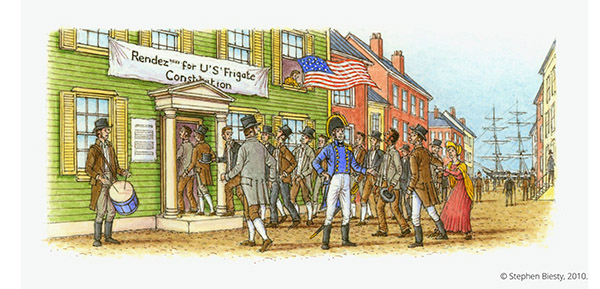
“Step this way, gentlemen, to join the crew of America’s finest frigate.” Standing in the street of a seaport, Constitution’s recruiting officer Charles Morgan has a well-rehearsed story. He tells potential seamen about the pay, the food, and the chance of glory and fortune in the Navy. Many men in
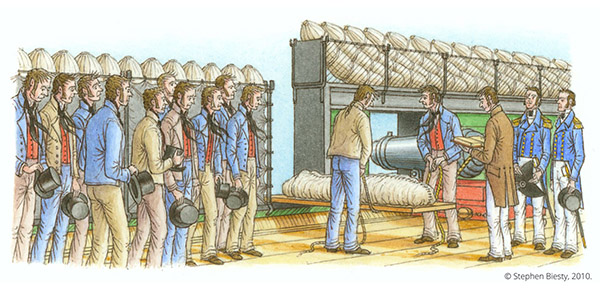
Deaths were not unusual on warships, but a funeral always stopped the busy routine of Constitution. Before it began, a ship-mate sewed the dead man into his hammock, with a cannonball at his feet. The last stitch went through his nose, as a final test for life. Then, to a

Midshipmen served as Constitution’s trainee officers. Often the sons of wealthy or powerful families, some were as young as 15. Their duties on board were to study, and write journals. As they learned, though, they also stood watches, and the oldest might even command a captured enemy ship. In front
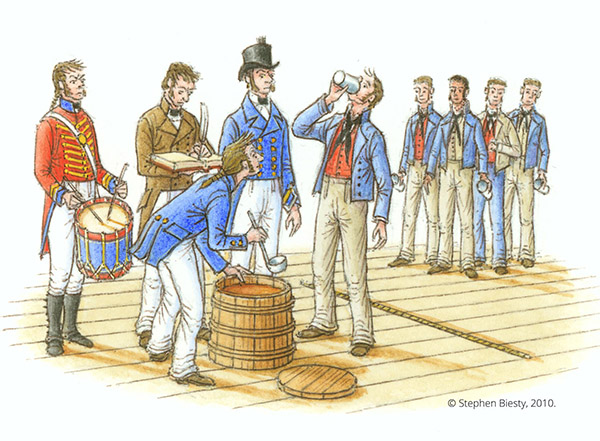
To a sailor on Constitution, there was no happier sound than the ringing of seven bells in the forenoon watch. These chimes signaled it was time for grog: a whisky-and-water drink served just before meals. To stop sailors hoarding it and getting blind drunk, they had to swallow their ration
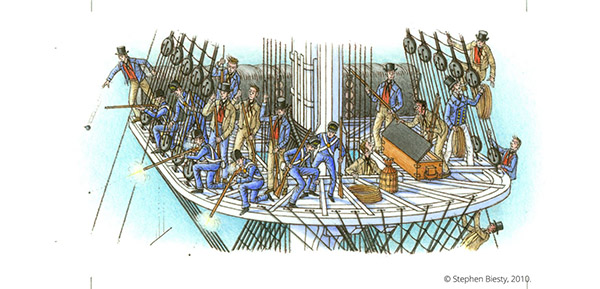
Constitution’s maintop was like a swaying, tree-top fortress when battle began. The ship’s bravest Marines fought from here, aiming to pick off enemy seamen with musket fire. Fixed around the main mast some fifty feet above the deck, the maintop was half the width of a tennis court. It felt

Constitution’s control center was the quarterdeck – the part of the spar deck behind the main mast. Here officers guided the ship’s course and gave orders to trim the sails – or launch an attack! For young midshipmen, the quarterdeck was a classroom, where they learned the skills and customs

In battle, Constitution’s Marines fired on the enemy with muskets. These guns were loaded with a lead ball and enough gun-powder to fire it, wrapped in a paper “cartridge”. Marines bit off the top, and tipped a little powder into the gun’s pan. They poured the rest – and the
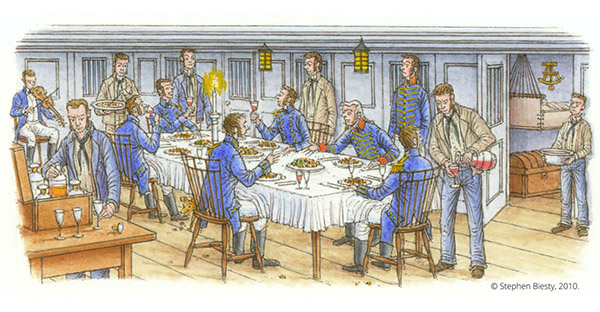
Sitting down in their wardroom for dinner, Constitution’s officers look just like gentlemen ashore dining in a good restaurant. Indeed, they eat far better than the seamen they command. They club together to buy fresh food, preserves and wines. Their servants act as cooks and waiters. These are not the
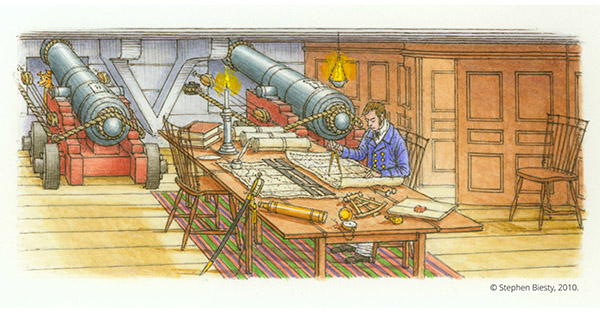
In his quarters at the stern of ship, the captain enjoys a luxury that everyone else aboard lacks: space. In this roomy, calm, comfortable cabin, he plans the ship’s route, and makes decisions that might win or lose a battle – or a war. It’s a big responsibility, and it’s
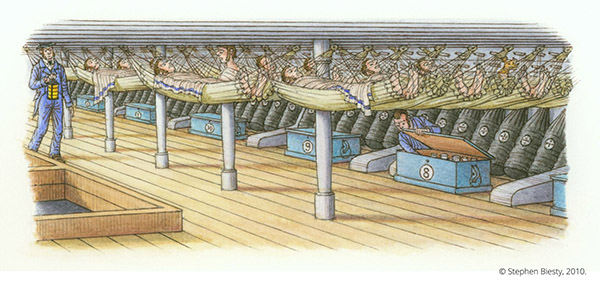
At night, seamen sleep in hammocks slung between beams – or at least, half of them do. For the crew of Constitution is divided into two “watches” (teams.) One watch sails the ship from 8pm to midnight, then sleeps for four hours while the other watch works. Tomorrow, the two
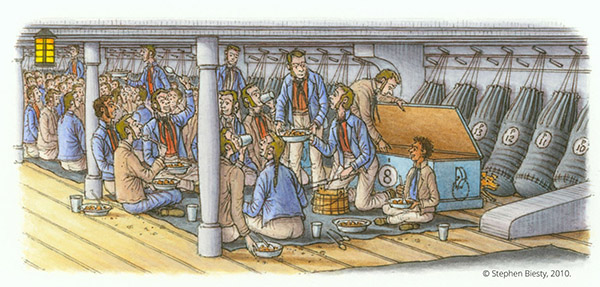
Every sailor on Constitution is part of a 12-strong family called a mess. “Messmates” are not related, but they might as well be, for they are as close as brothers. Each mealtime, they gather in the same spot on the berth deck, spread out a cloth, and sit round it
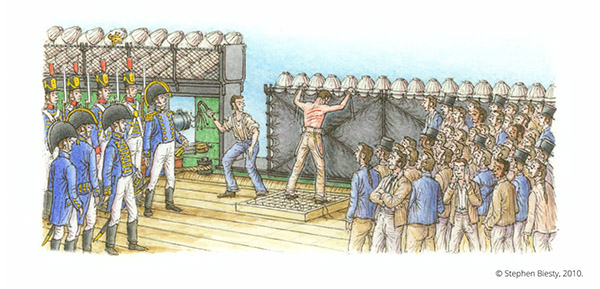
“All hands on deck to witness punishment, ahoy!” This command from the Boatswain brings Constitution’s entire crew to the middle of the ship to watch a flogging. This spectacle is a brutal but effective way to make sure the crew obeys orders. Those who don’t are tied to the ship’s
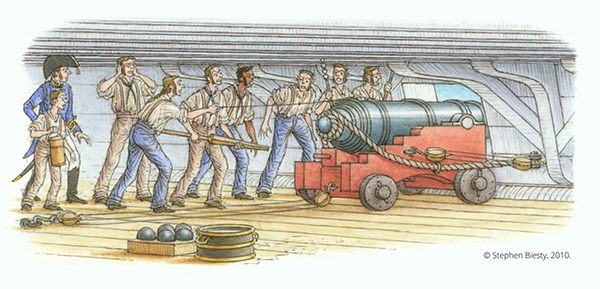
Constitution’s 52 heavy guns give her awesome power in battle, but they are useless without expert gun crews to fire them. To hone their skills, the seamen practice regularly, rehearsing a strict routine until they can do it blindfolded. Every man plays his part with furious concentration, for a naval

On the decks above, cannon and musket fire do murderous jobs, but here in the cockpit everyone works to save lives, not to take them. For when battle rages, this cramped space just above the hold becomes an operating room. On a makeshift table the ship’s surgeon removes bullets and

Constitution’s decks are smooth, white and spotlessly clean. Keeping them that way is the seamen’s’ most unpopular chore. They do it by scrubbing the planks with “holystones” – great slabs of gritty rock. Smaller “prayer books” clean the tight corners. Sprinkling the deck with salt water and coarse sand helps
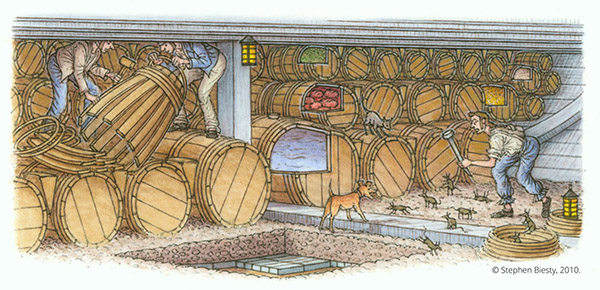
In the deepest, darkest, dingiest place at the very bottom of Constitution is the hold: a gigantic wooden warehouse. Here, packed tight in barrels, is enough food, water and other provisions to supply the ship for six months. However, the crew won’t eat and drink all of this. They share
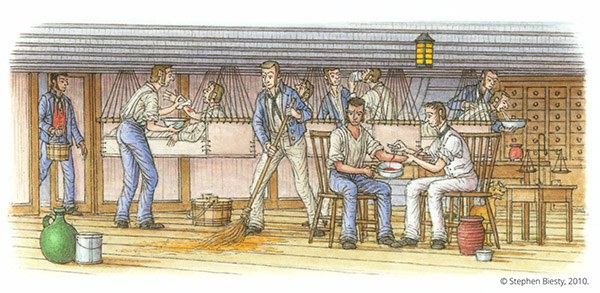
Constitution’s crew are a healthy lot. Few catch the infectious diseases that on other ships are more deadly than enemy cannon. And if a sailor does fall ill, he is soon treated. In the sickbay surgeon Amos Evans and his assistants usually care for a dozen or more patients. Rest,
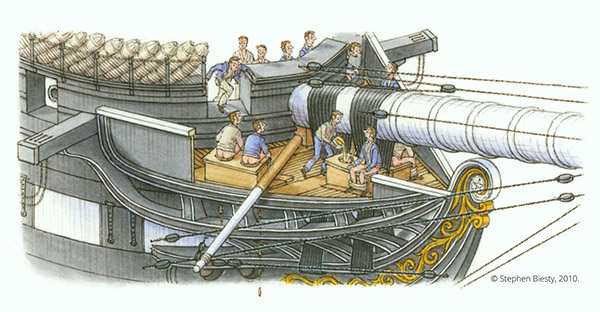
At the head (the very front) of Constitution are eight “seats of ease.” Here the seamen “ease” themselves into the ocean. The facilities are simple – little more than planks with holes. Those using them don’t linger long in the bracing wind. The splashing wave cut by Constitution’s bow keeps
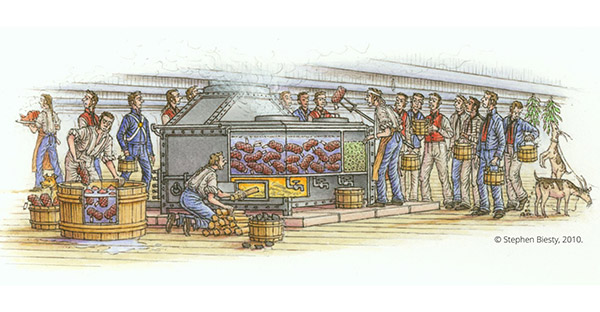
Feeding 450 hungry sailors was no easy task. It’s especially tough when Constitution has been at sea for a month, and supplies are salted or dried. Cook William Long did his best, sweating and swearing at a huge hot beast of a stove in the galley. The food he serves
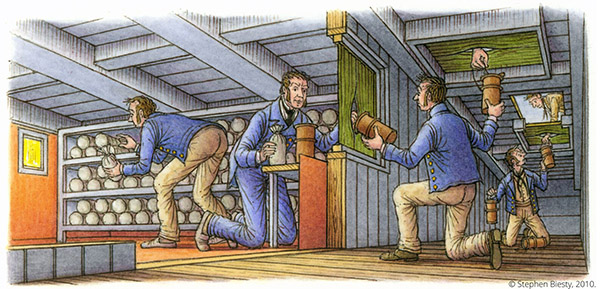
Buried deep below Constitution’s waterline was a strange, cramped, dark, place: the magazine. Copper lined the walls. The only light came through a window from a lantern in the next room. Sailors working here were forbidden to carry iron objects, and they wore felt slippers. These precautions were needed because
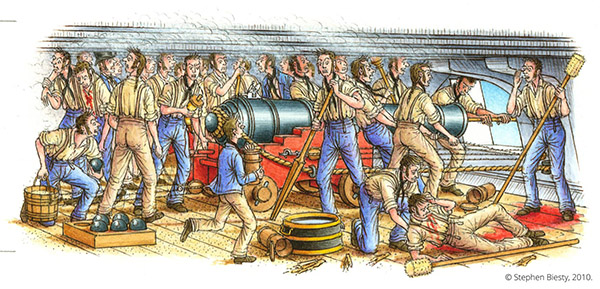
Roaring and belching fire, Constitution’s guns were like huge and dangerous dragons when the enemy drew near. Seamen fed their smoking mouths with gunpowder and iron. Thick ropes controlled them, yet with every shot they jerked and lurched, threatening to break loose. Constant training taught each member of the gun
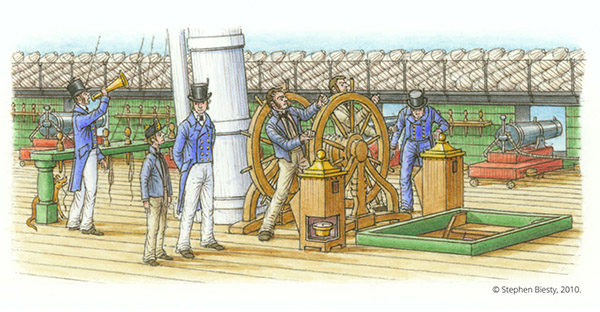
Who steered the ship? Not the captain: he was busy with more important work. Not the sailing master, though he choose the ship’s course. Nor the Lieutenant, though he gave orders to the men holding the wheel. The actual steering job was shared by Constitution’s 150 able seamen. Every “able”
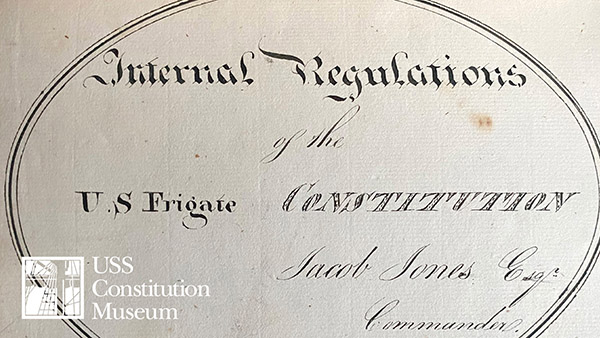
In the Age of Sail, naval captains established their own rules and regulations, in addition to those imposed by the larger U.S. Navy, to dictate the order and discipline among their crew. In this video, find out what kind of rules they enforced.

Would you have liked to be a sailor during the War of 1812? Or maybe you’d prefer to be the captain instead? In this video, find out what it really took to be a captain in the Age of Sail.
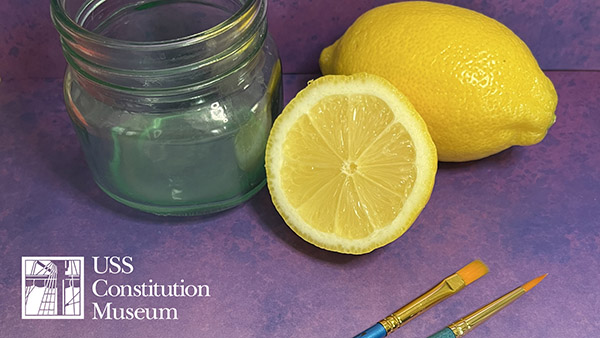
Learn how to write a secret message using 19th century invisible ink: lemon juice and heat! This activity is inspired by a real-life secret message written by Commodore William Bainbridge while he was held captive in Tripoli in 1803.

A personal letter from USS Constitution sailor Isaac Washburn to his sister, Abigail Hill, written in 1844. He writes about the foods he received and the frequency with which he received it. The food Washburn ate were not so different than what he would have eaten if he served in

This certificate was a form of ID for American sailors in the early 1800s. It provided proof of their United States citizenship and was intended to help protect them from the British practice of impressment, or the seizing of men and sailors for service in the Royal Navy.

This is an allotment receipt, a form authorizing a Boston Navy Agent to pay one half of USS Constitution seaman Jesse Cole’s monthly wage to his wife Tabitha – eight dollars per month for ten months. It speaks to the emotional and financial bond that tied together a sailor and
This is a list of popular songs from the early 19th century, with suggestions on where to find them. Listen to some early American tunes with your students, just as officers and sailors did during their time off duty.
Drill like the Marines using commands and descriptions from 1812-period drill manuals.
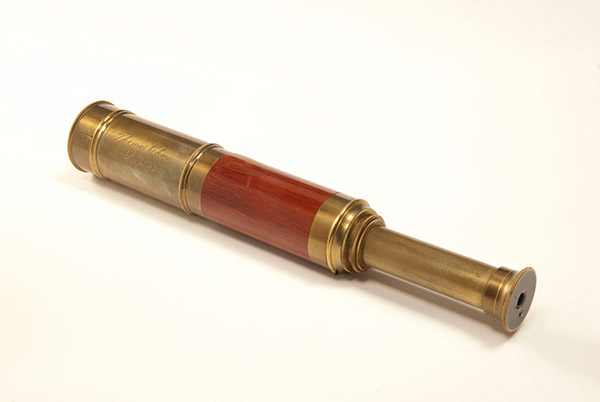
This wooden and brass telescope was owned by purser Thomas Chew. It represents the type used by mariners during the late 18th and early 19th centuries. It is a personal telescope, small enough to be slipped into a pocket, and was perhaps used by Chew to detect enemy ships on
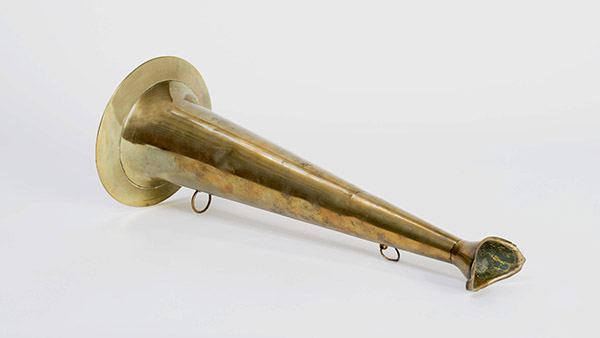
There were no radios or loud speakers on board USS Constitution in the War of 1812. Instead, speaking trumpets like this one were used to amplify sailors’ voices. Officers could use them to communicate orders during battle, and when two ships encountered each other, captains would use them to have

This portable writing desk belonged to USS Constitution’s second captain, Silas Talbot. Desks like this were common among naval officers, because they were easy to transport between ship and shore, provided a convenient writing surface, and served as secure storage for important documents and letters.

This is a ship’s biscuit from 1861. A sailor aboard USS Constitution kept it as a souvenir. Discuss with your students: why would a sailor save this biscuit? Can you imagine saving a piece of bread today? Can you think of other food or personal items people might save as
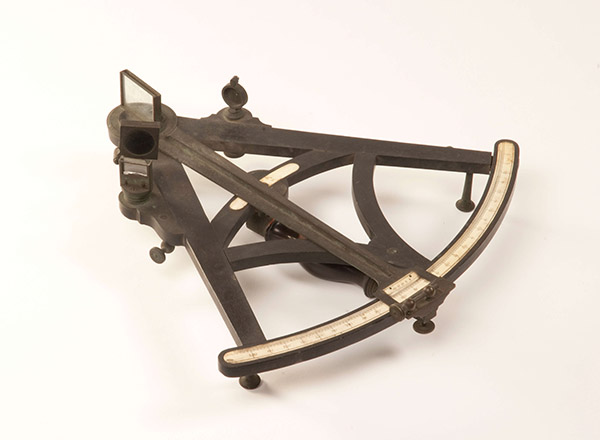
A sextant was an essential navigation tool. It was used for determining a ship’s position at sea. It measured the angles between the horizon and the sun at noon to determine the ship’s latitude.
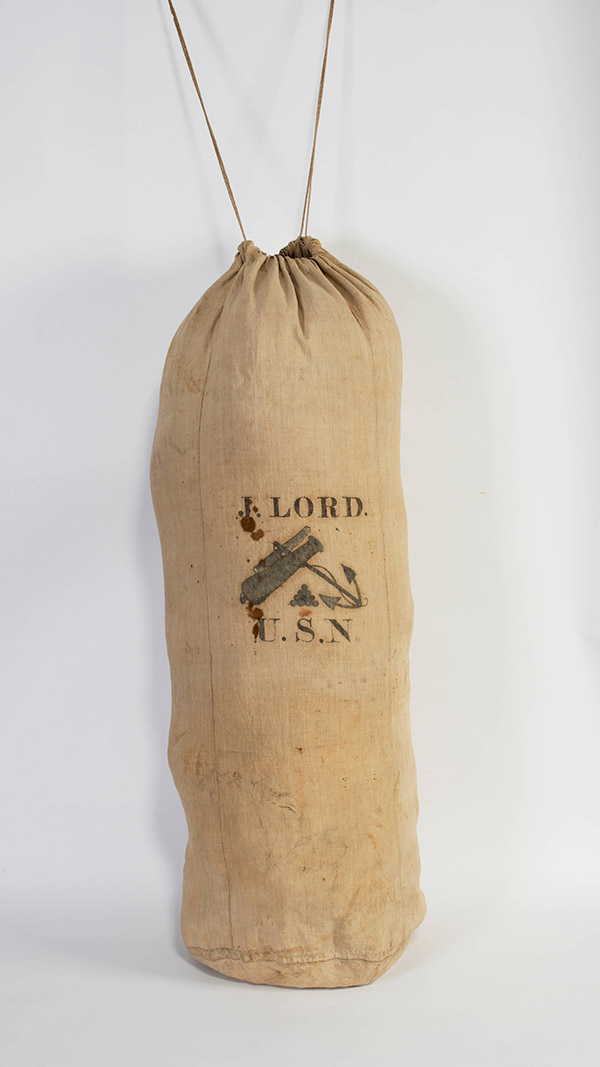
This seabag is a rare surviving example of a once common, utilitarian item. Seabags were issued to United States Navy sailors as a means of storing clothing. Navy-issued bags were painted black to waterproof them. Personal bags, like this one, were often richly decorated by their owners. This bag belonged

During the War of 1812, powder horns were used to carry the finer gun powder used in the Ship’s long guns. This horn is uniquely decorated with militaristic themes by John Lord, a gunner on USS Constitution from 1824-1828.

This birds-eye diagram shows how hammocks were arranged on the berth deck for sleeping. It is from David Steel’s 1794 book, The Elements and Practice of Rigging and Seamanship.
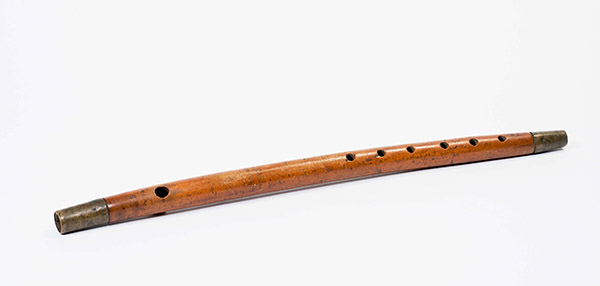
This instrument was used to communicate orders to the Ship’s crew, such as calling them to battle. Fife music also gave rhythm to heavy work such as raising an anchor. The fife was played by the Marines musicians on board.
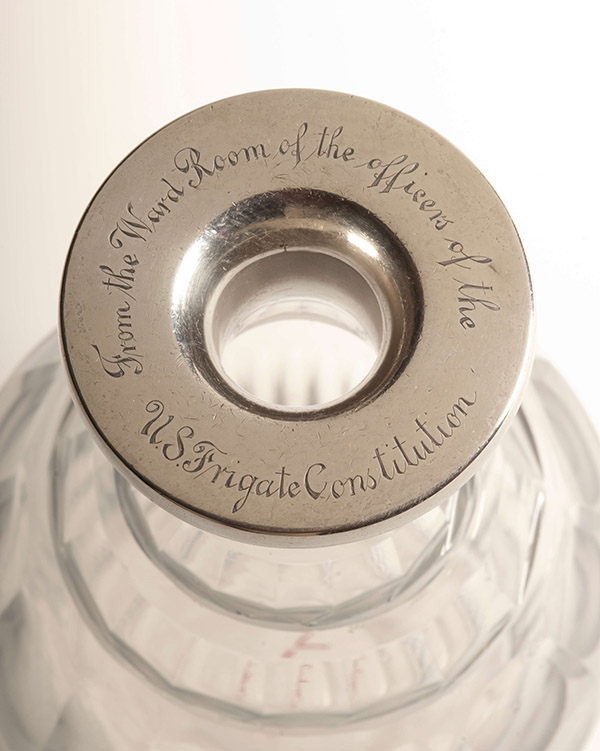
This object was used for pouring wine in ships’ wardrooms, the place where officers ate on board. Early frigates had a lot of tableware like this decanter, but few shipboard objects as fragile as this survive today. This decanter is exceptionally rare as it was used in the wardroom of

USS Constitution’s boatswain’s mate would use a cat of nine tails, a whip with nine knotted cords, to flog sailors that needed to be punished for a serious offense. Flogging was a brutal but effective way to ensure that sailors obeyed orders on board Navy ships in the early 1800s.
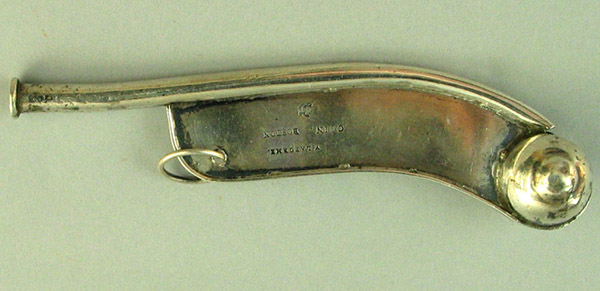
The boatswain’s pipe (pronounced “bosun”) was used for communication on a ship. Its loud and piercing sound woke up sailors and called them to duties throughout the day. It was the job of the ship’s boatswain to play it, and he traditionally carried it on a lanyard around his neck.
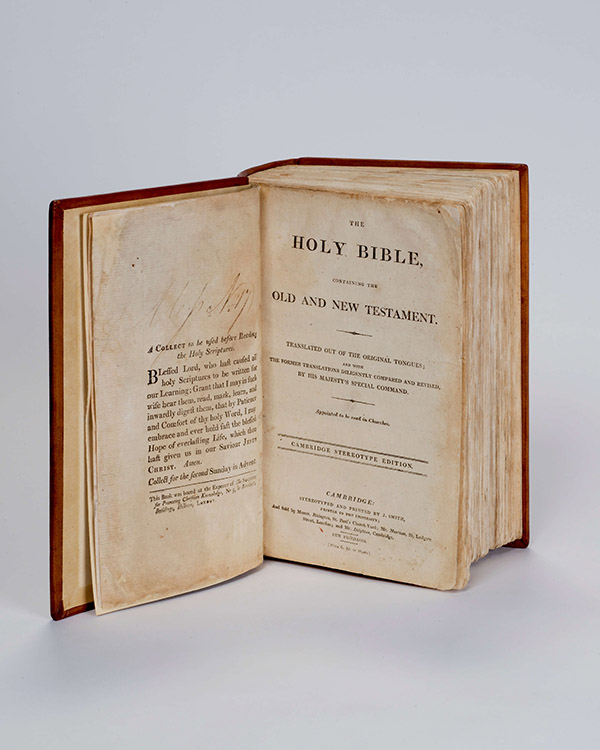
This King James Bible was removed from HMS Java after the British ship’s capture by USS Constitution on December 29, 1812. Following a ship’s surrender, it was common practice for the captors to scour the enemy’s decks for battle souvenirs to take home.
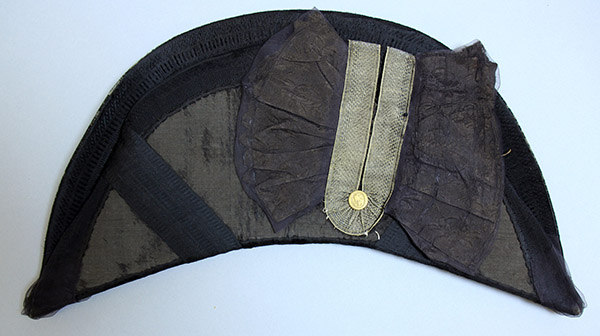
This collapsible silk hat, also known as a chapeau bras, belonged to Surgeon William Swift. Naval officers in the early 1800s typically wore hats like this to mark their rank among the crew.
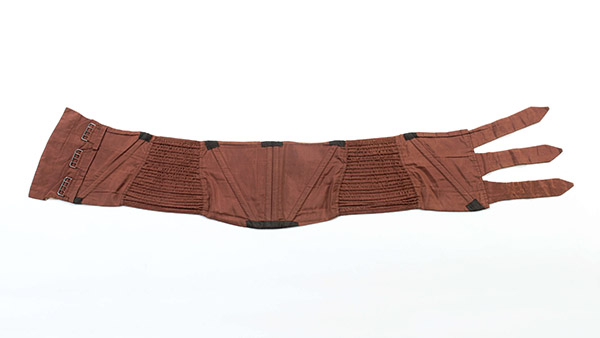
This set of stays belonged to Thomas Chew, who was USS Constitution’s purser during the War of 1812. Stays were a corset that helped fashionable men achieve the popular narrow-waisted look in the 1820s. Surviving portraits of Chew suggest that he was fashion-conscious, and he was certainly wealthy enough to
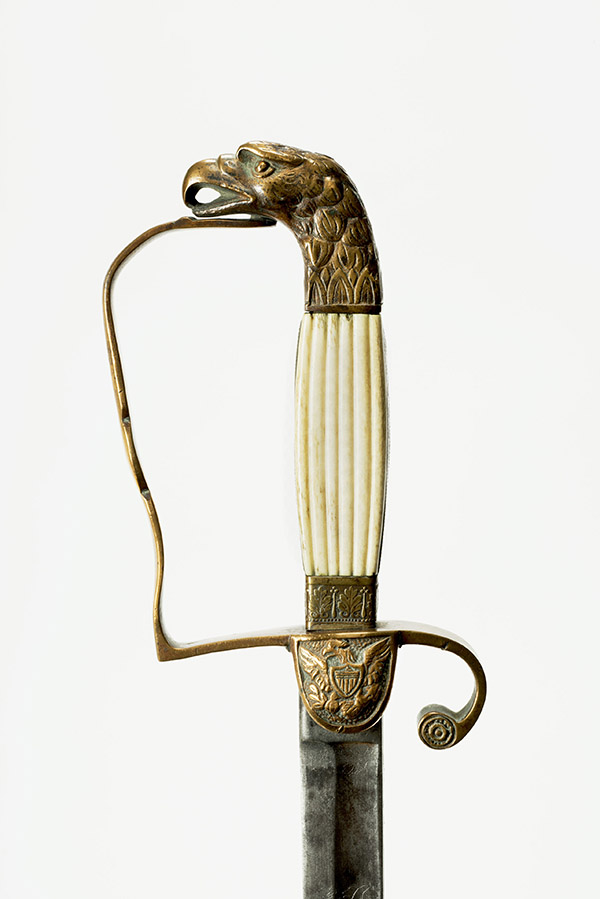
A decorative weapon such as this sword would not be used in actual combat. Instead, it was worn as a ceremonial piece, or a fashionable accessory indicative of rank. It belonged to Pardon Mawney Whipple, who served as a midshipman on USS Constitution during the War of 1812.
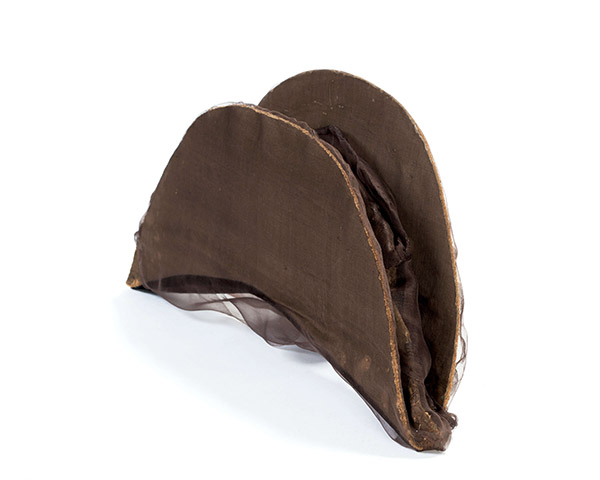
This cocked hat was worn by Pardon Mawney Whipple after his promotion to lieutenant in 1820. At that time, the hat was in fine form with gold lace and shiny silk. Stripped of its decoration and worn thin over time, the hat remains a relic of a U.S. Navy officer

It was common in the 19th century to give a lock of hair to family members as a memory of a loved one. Hair, which does not decompose quickly, was often braided, tied with ribbon, or incorporated into jewelry. This lock of hair belonged to Pardon Mawney Whipple, who served
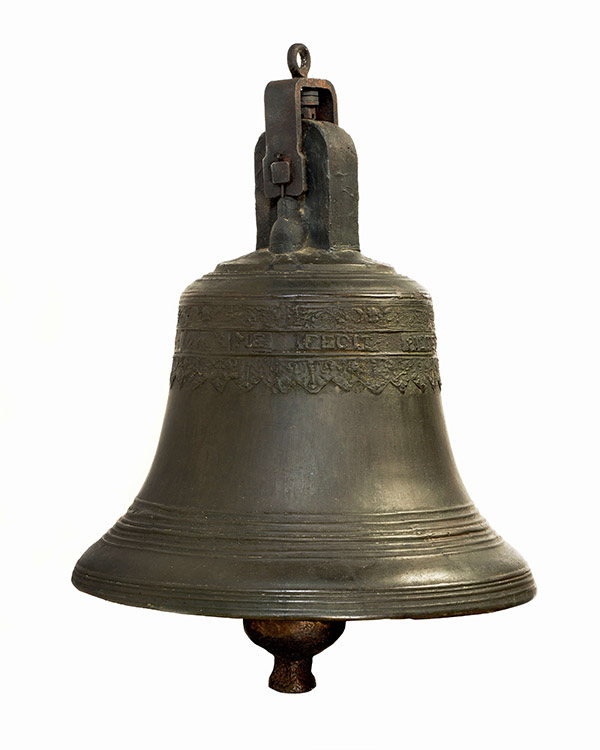
A ship’s bell played a crucial role for timekeeping on board a ship, and was rung every half hour to mark the passage of time in each watch. This bell was purportedly removed from HMS Guerriere and used as a substitute for Constitution‘s bell, which was destroyed during the battle
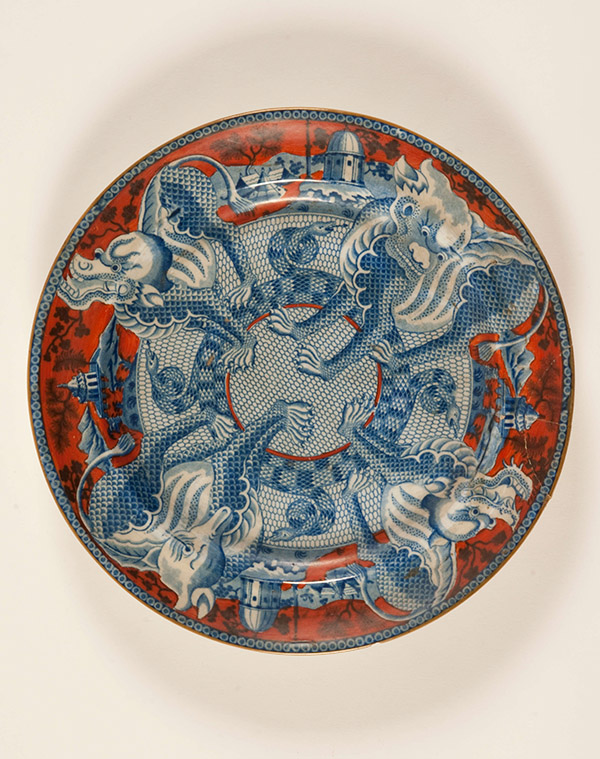
This ornate dinner plate was retrieved from HMS Guerriere following its defeat by USS Constitution on August 19, 1812. It was common for fine items like this to be taken from a defeated ship.
Why did USS Constitution need a band? Who was in the band? This article looks at a musical part of the Ship’s history.
Ship boys were vital members of the 1812 crew–and some were as young as eight years old. Read about the lives of the youngest crew members in this blog article.
There was not much space for the average sailor’s personal belongings on a Ship with 500 crew members. Each seaman was provided with one seabag to fill with clothing and personal belongings. No overpacking allowed on a Navy ship!
Joining the Navy provided many opportunities for 1812 sailors, but life on board a warship at this time was dangerous. Battles resulted in gruesome injuries, but even the everyday work of the Ship–hauling lines, working the anchor, climbing aloft–proved perilous.
Where did sailors go to the bathroom at sea? The answer varied depending on rank. Read this blog article to learn about “doing your business” on an 1812 warship.
Unlike the average sailor, officers on board USS Constitution during the War of 1812 lived the life of a gentleman, even at sea. Learn about the perks and comforts they were given on board in this blog article.
Bread was a staple of the 1812 Navy diet–but the bread on board at that time USS Constitution was not like our sandwich bread today. These ship biscuits were hard and lasted for months at sea without spoiling. Read more about what it took to bake and store this quintessential
What happened to sailors when they lost a battle at sea? This article explains the treatment of both British and American naval prisoners of war in the 1812 era.
Over the two and a half year course of the War of 1812, USS Constitution was engaged in three battles. What did sailors do when they were not actively fighting this war? Read this article to learn about an average day in the life of the U.S. Navy crew.
From the timber needed for repairs, to navigational instruments, to the fuel that lit an officer’s cabin, this article describes all of the material culture–the stuff–needed to outfit a warship like USS Constitution.
What does a hungry sailor eat after a hard-day’s work on USS Constitution? This article provides an in-depth look at the food and drink rations provided on board the Ship–including first-hand reviews from sailor journals and memoirs.
In the early 1800s, free black men made up an average of 15% of U.S. Navy crews. Read about the motivations behind this service and the opportunity it provided for black sailors.

In part II, find out more ways sailors communicated on board USS Constitution, even using invisible ink! A Sailor’s Life, Live! was a virtual series produced in 2020.

Learn how sailors communicated on USS Constitution, using objects like a speaking trumpet and signal flags. A Sailor’s Life, Live! was a virtual series produced in 2020.
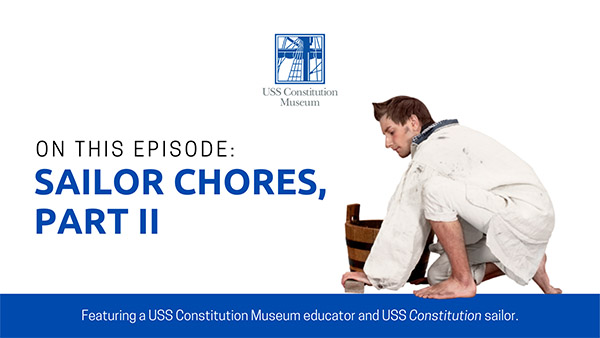
Sailor chores on USS Constitution continue in part II with washing dishes and clothes on the ship. A Sailor’s Life, Live! was a virtual series produced in 2020.
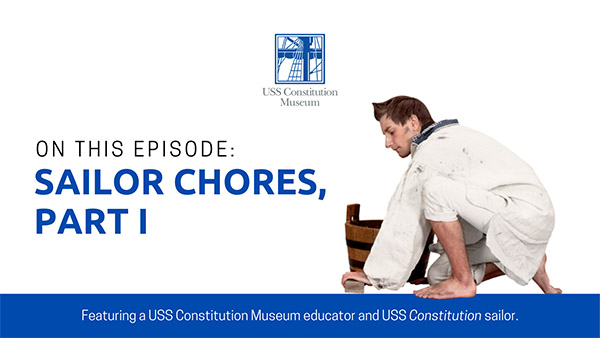
Stow your hammock, scrub the decks and clean the head as you learn about chores on USS Constitution. A Sailor’s Life, Live! was a virtual series produced in 2020.
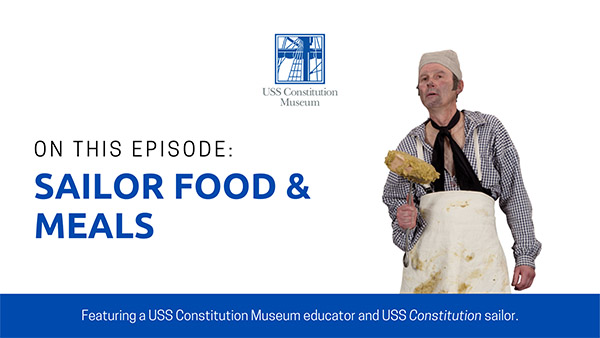
Hungry for ship’s biscuit and dandyfunk? Get ready to chow down as you learn about what sailors ate on board. A Sailor’s Life, Live! was a virtual series produced in 2020.
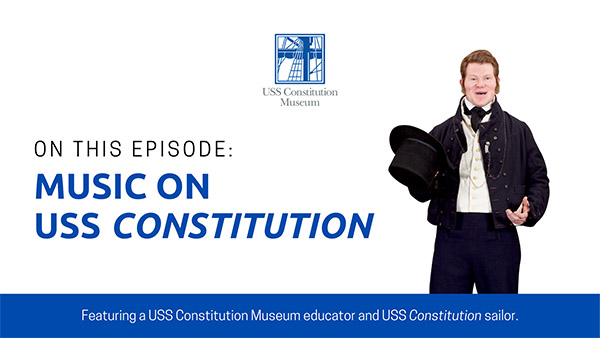
Whistle, drum, sing and trumpet in this episode. We look at the ways music and instruments were important to daily life on a wooden warship. A Sailor’s Life, Live! was a virtual series produced in 2020.
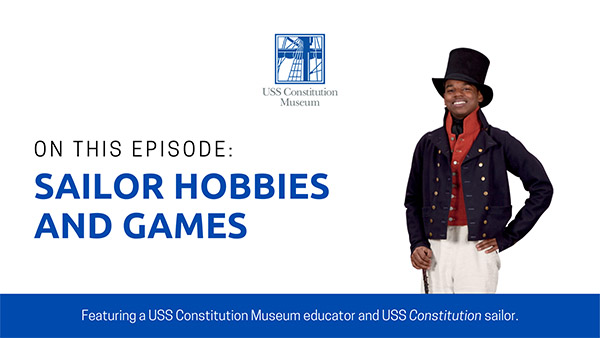
Life on a Navy warship might seem like all work and no play. But 1812 sailors did have a chance to relax sometimes. This episode shows how they spent their free time. A Sailor’s Life, Live! was a virtual series produced in 2020.

©2022 USS constitution museum